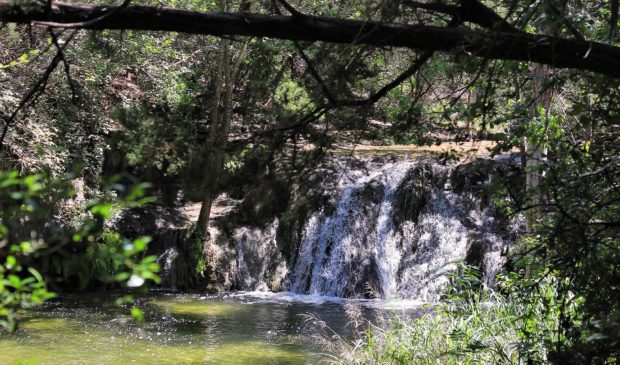Environmental Commission recommends Watershed Department issue a middle-of-the-road bond in 2018
Monday, January 15, 2018 by
Jessi Devenyns The beginning of 2018 marked the beginning of a bond election year. At the latest meeting of the Environmental Commission, the Watershed Protection Department presented plans to ask the public for help conserving Austin’s environment through the acquisition of green space and the reparation and prevention of damage done by flooding and drainage.
After hearing three potential levels of funding, the Environmental Commission recommended taking a middle ground and not pushing the public’s pocketbooks too far.
Matt Hollon, the manager of the Watershed Protection Department Planning Division, said that although helping people is the department’s number one priority, “We’re trying to get bang for the buck.”
The last successful bond on the drainage side was in 2006 and gave the department $95 million. “That project funded 23 very important projects,” he said. This time the Environmental Commission recommended the department ask for $100 million in hopes of funding 15 projects that can be completed within the next five to seven years.
Ideally, Hollon explained that for 2018, “The full need would be $230 million. But that wouldn’t be a realistic number.”
Despite the sizable price tag, Hollon says that even if the bond passes, Austin still will have a large number of unfunded drainage and flooding needs. When you add up the need, he said, “You start topping a billion dollars.”
Currently, 40 percent of the required drainage projects are in the Eastern Crescent due to the natural flow of the watershed. In Austin, water flows west to east, making Southeast Austin the main recipient of the watershed’s flow. Hollon suggested that planned reinforcement and reparation projects that the bond would fund would work toward making these communities more stable in the future.
Wrapped up in this proposed bond is also an additional request for $50 million in funds to purchase 3,000 acres of open space. “This portion of the watershed bond for open space, it benefits everyone in Austin and Central Texas,” explained David Johns, program manager and geologist at the watershed department. “These bonds are the only vehicle that we have to make these land purchases.”
Since 1998, the city of Austin has been purchasing open space with the intention of maintaining it as impervious cover. So far 28,000 acres of land have been protected through $158 million in bond money. The goal is to protect 100,000 acres, which Johns admitted is a lofty but necessary goal to maintain the balance of a city with less than 10 percent impervious cover. In 2018, the land purchased will be concentrated within the Barton Springs Zone.
Mike Kelly, a managing engineer at the watershed department, explained that it is hoping to make a big push for land acquisition during this bond election. “There’s a finite amount of land,” he explained. “And that is rapidly decreasing. It is also rapidly increasing in price.”
These tracts of land that the city is intending to purchase are also integral to the Parks and Recreation Department master plan which relies upon land with quality water and non-eroded areas. “These two bonds really do work well together,” Kelly said.
Although the intention behind purchasing the land is to improve and maintain water quality, Commissioner Pam Thompson said, “I just think it’s a resource to us in so many other ways than water quality.” She was referring to the land’s potential use as parkland for the public.
Commissioner Hank Smith echoed her sentiments saying that opening the land to the public “so they can see what they’re buying with their tax dollars” would be an ideal way to encourage the public to help fund the initiative.
The total bond that the Environmental Commission recommended proceed forward totaled $150 million.
Photo by Larry D. Moore [CC BY-SA 4.0], via Wikimedia Commons.
The Austin Monitor’s work is made possible by donations from the community. Though our reporting covers donors from time to time, we are careful to keep business and editorial efforts separate while maintaining transparency. A complete list of donors is available here, and our code of ethics is explained here.
You're a community leader
And we’re honored you look to us for serious, in-depth news. You know a strong community needs local and dedicated watchdog reporting. We’re here for you and that won’t change. Now will you take the powerful next step and support our nonprofit news organization?








